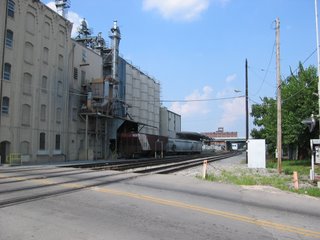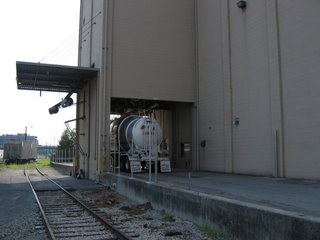Bob Beauregard, who had a background in architecture in addition to his degrees in planning, taught me to appreciate architecture with a little bit of history thrown in. The class in question was actually a one-time seminar he taught. One of the more memorable classes were two -- we met for three hours a week – where he showed us slides he had taken around Philadelphia and environs. He showed us the slides and talked about architecture. I never looked at buildings the same way again.
What do these men have to do with a factory in Knoxville? I'll tell you. Shortly after we arrived in Knoxville, we arrived we went for a walk through a section of the city that the magazine in our hotel room referred to as “old town.” A working set of freight rail tracks formed a sort of boundary on the edge of this residential/shopping/restaurant district. As we approached the rail tracks, I saw this working factory, the White Lily Flour Company. A working factory in the middle of Knoxville. I was blown away, because I wasn’t expecting it.
Sometime later, a quick search of the web revealed that the White Lily Flour Co. has been in business since at least 1883, making "light" flour. I believe that we had bisuits made with White Lily flour while we were in Knoxville. A delight, and they did indeed seem "lighter.


The entire factory complex made a distinct impression on me. I’m not sure why. I’ve seen many factories over the years. Perhaps it was because we had just driven 700 miles. Perhaps it was because about one-half to three-quarters of mile away was our hotel just across the street from several office buildings. Perhaps it was because in other smaller to mid-sized cities factories both larger and smaller then the White Lily Flour Co. factory have been demolished to make way for new development. In any case, I am glad that I had my digital camera with a charged battery, so I could take some pictures. And I thought about both Profs Beauregard and Krueckeberg who taught me to look at cities with a different set of eyes.
I would have seen the factory even if I had never encountered Profs. Krueckeberg and Beauregard. But the lessons I learned, including looking at buildings and surrounding infrastructure with a different pair eyes stay with me to this day. I saw this factory and I thought of both of these wonderful men. I was excited because I saw something special with a different set of eyes.

No comments:
Post a Comment